
Prospero is a fictional character and the protagonist of William Shakespeare's The Tempest.
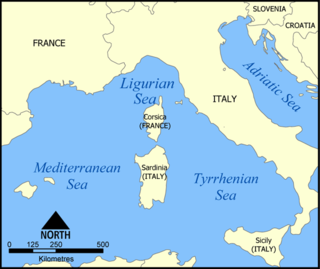
The Ligurian Sea is an arm of the Mediterranean Sea. It lies between the Italian Riviera (Liguria) and the island of Corsica. The sea is thought to have been named after the ancient Ligures people.

Corsica is an island in the Mediterranean Sea and one of the 18 regions of France. It is the fourth-largest island in the Mediterranean and lies southeast of the French mainland, west of the Italian Peninsula and immediately north of the Italian island of Sardinia, the nearest land mass. A single chain of mountains makes up two-thirds of the island. As of January 2024, it had a population of 355,528.

Erodium is a genus of flowering plants in the botanical family Geraniaceae. The genus includes about 120 species with a subcosmopolitan distribution, native to Europe, North Africa, Asia, Australia, and more locally in North and South America. They are perennials, annuals, or subshrubs, with five-petalled flowers in shades of white, pink, and purple, that strongly resemble the better-known Geranium (crane's-bills). In English-speaking areas of Europe, the species are known as stork's-bills. In North America they are known as filarees or heron's bill.

Eupatorium cannabinum, commonly known as hemp-agrimony, or holy rope, is a herbaceous plant in the family Asteraceae. It is a robust perennial native to Europe, NW. Africa, Turkey, Syria, Iran, Iraq, Jordan, the Caucasus and Central Asia. It is cultivated as an ornamental and occasionally found as a garden escape in scattered locations in China, the United States and Canada. It is extremely attractive to butterflies, much like buddleia.

The Corsican wildcat is an isolated cat population of uncertain taxonomic status that has been variously regarded as a separate species of its own, a subspecies of the African wildcat, or a population of feral house cats that were introduced to Corsica around the beginning of the first millennium.
Paul Mabille was a French naturalist mainly interested in Lepidoptera and botany.

Doronicum corsicum is a species of the genus Doronicum and the family Asteraceae. some authors have regarded the species as belonging to either Arnica or Aronicum. It is a rare plant that has been found only on the Island of Corsica in the Mediterranean.
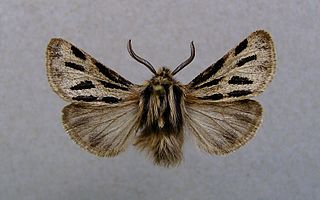
Ocnogyna is a genus of moths in the family Erebidae from western Eurasia. The genus was erected by Julius Lederer in 1853. One aberrant species, Ocnogyna parasita, has females with non-functional wings, and because of this was formerly placed in its own genus Somatrichia, but is now in Ocnogyna.
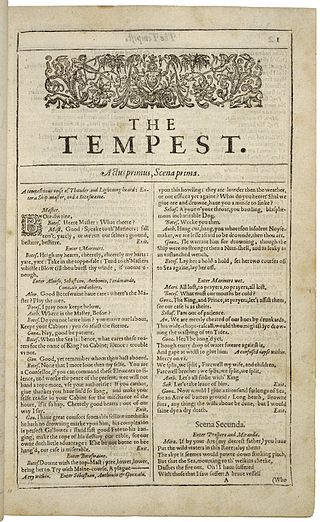
The Tempest is a play by William Shakespeare, probably written in 1610–1611, and thought to be one of the last plays that he wrote alone. After the first scene, which takes place on a ship at sea during a tempest, the rest of the story is set on a remote island, where Prospero, a wizard, lives with his daughter Miranda, and his two servants: Caliban, a savage monster figure, and Ariel, an airy spirit. The play contains music and songs that evoke the spirit of enchantment on the island. It explores many themes, including magic, betrayal, revenge, and family. In Act IV, a wedding masque serves as a play-within-a-play, and contributes spectacle, allegory, and elevated language.
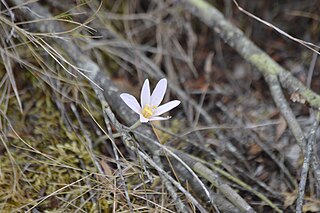
Colchicum corsicum is a species of flowering plant in the Colchicaceae family. It is native to the islands of Corsica and Sardinia in the Mediterranean.
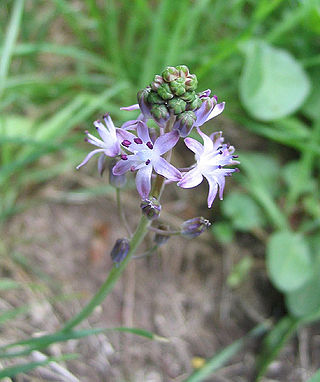
Prospero is a genus of bulbous flowering plants in the family Asparagaceae, subfamily Scilloideae. It is distributed in Europe, around the Mediterranean, and through the Middle East to the Caucasus.

Ocnogyna corsicum is a moth of the family Erebidae. It was described by Jules Pierre Rambur in 1832.

Allium corsicum is a plant species endemic to the island of Corsica in the Mediterranean.

Galium corsicum, the Corsican bedstraw, is a plant species in the Rubiaceae. It is native to the islands of Corsica and Sardinia in the Mediterranean.
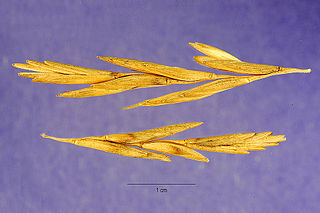
Thinopyrum is a genus of Eurasian and African plants in the grass family.
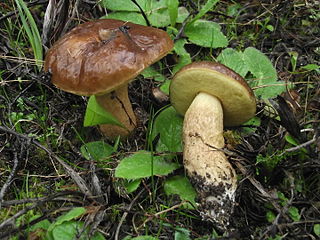
Leccinellum corsicum is a species of bolete fungus in the family Boletaceae. It grows in mycorrhizal symbiosis exclusively with rockroses in Mediterranean Europe and North Africa. The fungus was originally described as new to science in 1896 by French mycologist Léon Louis Rolland as a species of Boletus. Andreas Bresinsky and Manfred Binder transferred it to the newly circumscribed genus Leccinellum in 2003.
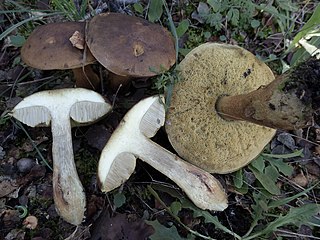
Leccinellum lepidum is a species of bolete in the family Boletaceae. Originally described as Boletus lepidus in 1965, the fungus has gone through controversial taxonomic treatments over the years and was subsequently transferred to genus Krombholziella in 1985, to genus Leccinum in 1990, and to genus Leccinellum in 2003. It is the sister-species of Leccinellum corsicum, with which it had been erroneously synonymised by some authors in the past.

Enhydrictis is a genus of extinct mustelid, belonging to the subfamily Galictinae. The type species, and best known, is Enhydrictis galictoides from the Pleistocene of Sardinia and Corsica. Some authors attribute species from mainland Eurasia to the genus, but this is disputed, with others considering the genus endemic to Sardinia-Corsica.
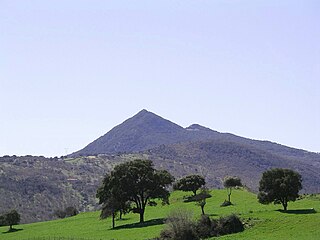
Mount Gonare is a mountain formation in central Sardinia, in the province of Nuoro. It is located in the administrative territory of Orani and Sarule and rises to an elevation of 1,083 m above sea level.



















